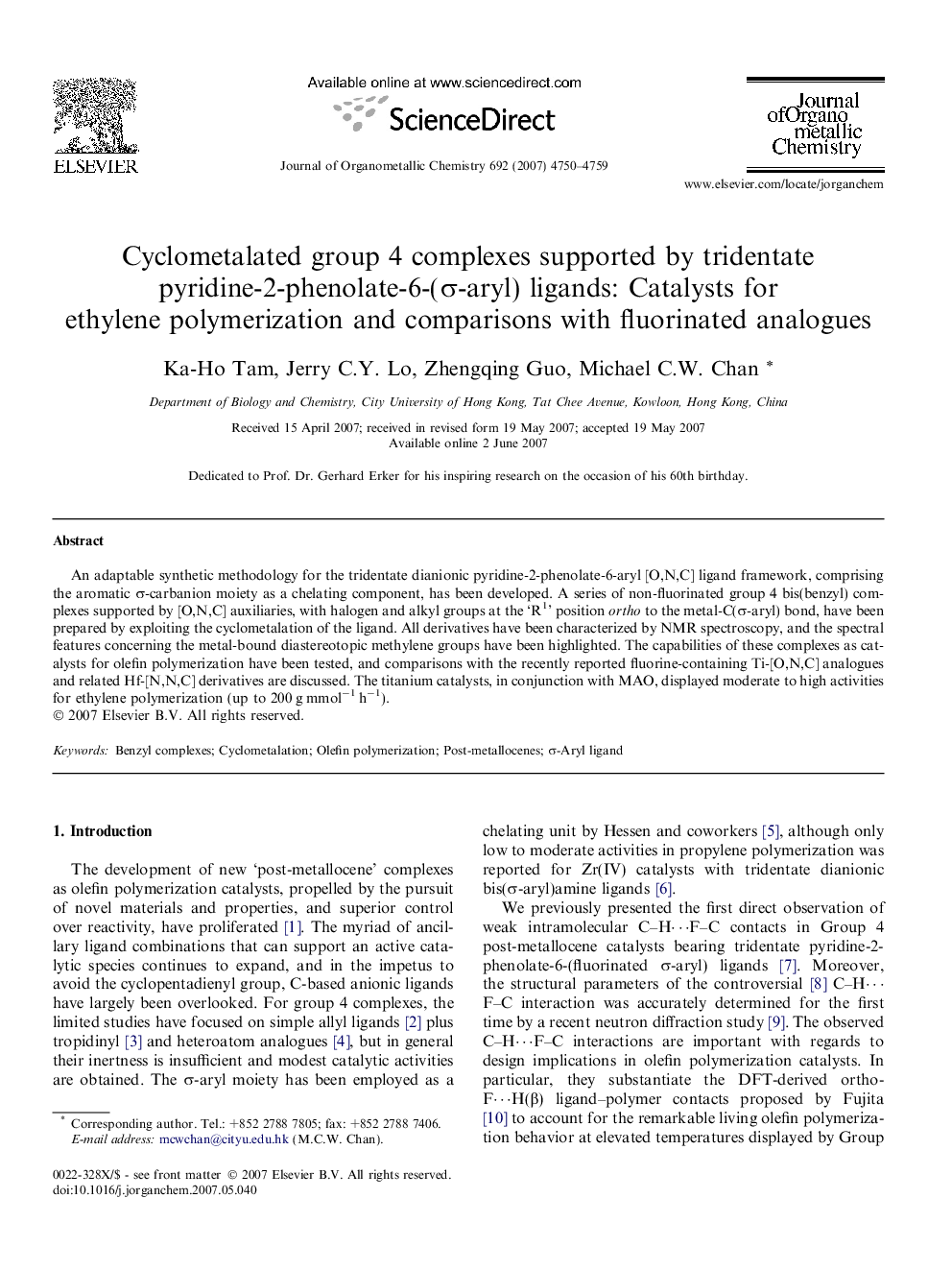| Article ID | Journal | Published Year | Pages | File Type |
|---|---|---|---|---|
| 1328233 | Journal of Organometallic Chemistry | 2007 | 10 Pages |
An adaptable synthetic methodology for the tridentate dianionic pyridine-2-phenolate-6-aryl [O,N,C] ligand framework, comprising the aromatic σ-carbanion moiety as a chelating component, has been developed. A series of non-fluorinated group 4 bis(benzyl) complexes supported by [O,N,C] auxiliaries, with halogen and alkyl groups at the ‘R1’ position ortho to the metal-C(σ-aryl) bond, have been prepared by exploiting the cyclometalation of the ligand. All derivatives have been characterized by NMR spectroscopy, and the spectral features concerning the metal-bound diastereotopic methylene groups have been highlighted. The capabilities of these complexes as catalysts for olefin polymerization have been tested, and comparisons with the recently reported fluorine-containing Ti-[O,N,C] analogues and related Hf-[N,N,C] derivatives are discussed. The titanium catalysts, in conjunction with MAO, displayed moderate to high activities for ethylene polymerization (up to 200 g mmol−1 h−1).
Graphical abstractThe pictured post-metallocene complexes (M = Ti, Zr, Hf) bearing the aromatic σ-carbanion as a chelating group have been prepared as olefin polymerization catalysts. The impact of different substituents on the σ-aryl moiety, especially at the R1 position, upon spectroscopic and polymerization characteristics have been examined.Figure optionsDownload full-size imageDownload as PowerPoint slide
